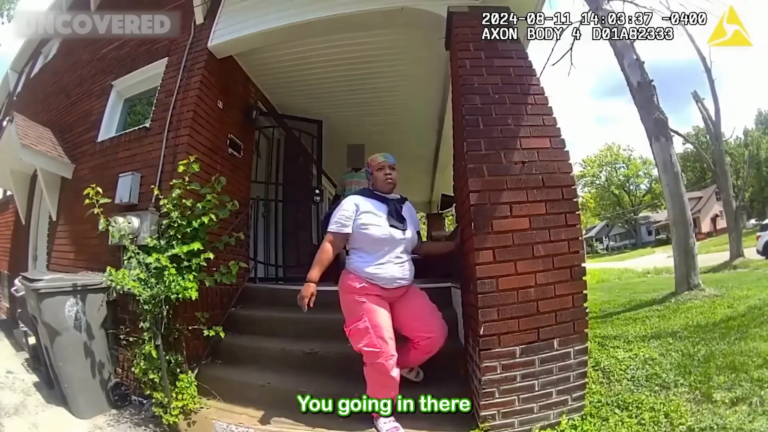
In today’s world, property owners are facing an alarming challenge with squatters and predatory, emboldened, non-paying tenants (herein after described as ‘squatters’), exploiting legal loopholes to occupy homes without permission. This blog delves into the complexities of squatter’s rights, the squatting process, and essential strategies for property owners to safeguard their investments.
Table of Contents
- Squatter’s Rights
- Squatting Process Explained
- Squatter Tactics for Avoiding Eviction
- Legal Steps to Remove a Squatter
- Engaging with a Squatter
- Duration of the Legal Process
- Protecting Your Property from Squatters
- Common Myths about Squatting
- Understanding Eviction Laws
- Practical Tips for Property Owners
- FAQ
Squatter’s Rights
Understanding squatter’s rights is essential for property owners facing this unsettling issue. These rights can vary significantly by jurisdiction, often creating confusion and frustration for those trying to reclaim their property.
In many areas, squatters can obtain legal rights to a property after residing there for a specific period, typically ranging from a few weeks to several years. This legal protection can make it exceedingly difficult for property owners to evict unauthorized occupants.

Photo by Mikhail Pavstyuk on Unsplash
Squatters may claim rights based on adverse possession, which allows them to gain legal ownership if they openly use and occupy a property without the owner’s permission for a designated period. This can lead to lengthy legal battles, leaving property owners in a precarious situation.
Understanding the Implications
The implications of squatter’s rights extend beyond mere inconvenience. Property owners may face financial losses, increased legal fees, and the emotional toll of dealing with unauthorized occupants. Awareness of local laws is crucial to navigating these challenges effectively.

Photo by Étienne Beauregard-Riverin on Unsplash
Squatting Process Explained
The squatting process typically starts with an individual or group taking residence in an unoccupied property without the owner’s consent. This can occur in various ways, including breaking and entering or simply moving into a vacant home.
Once a squatter occupies a property, they may attempt to establish residency by claiming to have a lease or by asserting their rights as a tenant. This often complicates the situation for property owners who may not be aware of their rights or the necessary legal steps to evict squatters.

Photo by Scott Webb on Unsplash
Common Squatting Scenarios
- Fake Leases: Squatters may produce forged rental agreements, claiming they have a legal right to occupy the property.
- Misrepresentation: Some squatters may mislead property owners by asserting they were scammed into moving in.
- Squatter Networks: Organized groups may target vacant properties, sharing tactics to avoid eviction.
Squatter Tactics for Avoiding Eviction
Squatters often employ various tactics to prolong their stay in a property, making it challenging for owners to regain control. These strategies can include exploiting legal loopholes and delaying legal proceedings.
One common tactic is to file counterclaims or motions that disrupt the eviction process. This can lead to extended court dates, frustrating property owners who are eager to resolve the situation.

Photo by Colin Lloyd on Unsplash
Common Tactics Used by Squatters
- Claiming Tenancy: Squatters may assert they are tenants, demanding legal protections that come with tenancy rights.
- Delaying Tactics: Filing motions and requesting continuances can stall eviction proceedings.
- Creating False Documentation: Squatters may produce fake documents to support their claims of residency.
Legal Steps to Remove a Squatter
Removing a squatter legally requires a clear understanding of the necessary steps. Property owners must act promptly and follow the law to avoid complications.
The first step is to gather evidence of ownership and document the squatter’s unauthorized presence. This includes photographs, lease agreements, and any communications with the squatter.

Photo by Scott Graham on Unsplash
Steps to Initiate Eviction
- Serve Notice: Provide the squatter with a formal eviction notice, clearly stating the intention to reclaim the property.
- File an Eviction Lawsuit: If the squatter does not vacate, file a lawsuit to initiate legal proceedings.
- Attend Court Hearings: Present your case in court, providing evidence of ownership and the squatter’s unauthorized occupancy.
- Obtain a Judgment: If successful, obtain a judgment that allows for the removal of the squatter.
Engaging with a Squatter
Engaging with a squatter can be a sensitive issue. While some property owners may feel inclined to communicate directly, it is crucial to approach the situation with caution.
Open dialogue can sometimes lead to resolution, but it can also complicate matters. Squatters may use any admissions or discussions against property owners in court, so it’s essential to document all interactions.

Photo by Brooke Cagle on Unsplash
Best Practices for Engagement
- Stay Calm: Approach the situation with composure, avoiding confrontational behavior.
- Document Everything: Keep records of all conversations, agreements, and actions taken.
- Consult Legal Counsel: Before engaging, seek advice from an attorney experienced in property law.
Duration of the Legal Process
The duration of the legal process to remove a squatter can vary significantly based on numerous factors. These include the jurisdiction’s laws, the squatter’s tactics, and the backlog in the court system.
In some cases, property owners may find themselves waiting six months to a year or more for a resolution. This protracted timeline can exacerbate the financial and emotional strain on property owners.

Photo by Brooke Lark on Unsplash
Factors Influencing Timeline
- Jurisdictional Differences: Laws vary by state, affecting how quickly evictions can occur.
- Squatter Response: If squatters contest the eviction, it can lead to delays.
- Court Backlogs: High volumes of cases can slow down the legal process significantly.
Protecting Your Property from Squatters
As a property owner, the threat of squatters can feel overwhelming. However, implementing proactive measures can significantly reduce the risk of unauthorized occupancy. Here are some essential strategies to protect your property.

Photo by Jakub Żerdzicki on Unsplash
1. Regular Property Inspections
Conducting regular inspections of your property is crucial. This ensures that any unauthorized activity can be detected early. Schedule visits to check for signs of squatting, such as unauthorized entry or unusual activity around your property.
2. Secure Your Property
Investing in robust security measures can deter squatters. Ensure that all doors and windows are properly secured, and consider installing deadbolts. Additionally, using security cameras can provide surveillance and deter potential squatters.

Photo by Scott Webb on Unsplash
3. Use Alarm Systems
Installing an alarm system can serve as an excellent deterrent. Alarm systems can alert you to any unauthorized entry, allowing for a quick response. Choose systems that offer remote monitoring for added peace of mind.

Photo by Bernard Hermant on Unsplash
4. Maintain Clear Communication with Neighbors
Engaging with your neighbors can create a community watch effect. Inform them about your property and ask them to report any suspicious activity. Neighbors can serve as an additional layer of security, watching over your property when you are not around.

Photo by Priscilla Du Preez 🇨🇦 on Unsplash
5. Avoid Lockboxes for Keys
While using lockboxes may seem convenient, they can pose a security risk. Squatters can easily access the key and enter your property. Instead, consider giving access only to trusted individuals or using smart locks that allow for controlled access.

Photo by Richard Payette on Unsplash
Common Myths about Squatting
Understanding the truth behind common myths related to squatting is essential for property owners. Misconceptions can lead to poor decision-making and increased vulnerability. Here are some prevalent myths debunked.

Photo by Markus Spiske on Unsplash
Myth 1: Squatters Have No Rights
Many believe that squatters have no legal rights. In reality, squatters can gain certain rights depending on local laws and the duration of their occupancy. This misconception can lead to property owners underestimating the seriousness of the situation.
Myth 2: Eviction is Simple
Another common myth is that eviction is a straightforward process. In fact, eviction can be lengthy and complex, often requiring legal action and significant time. Property owners may face numerous hurdles, including court delays and legal challenges from squatters.
Myth 3: All Squatters are Criminals
While some squatters may engage in illegal activities, many are victims themselves, often misled into occupying a property. Understanding this nuance can foster more compassionate and effective responses from property owners.

Photo by T. Syarifudin Budiana on Unsplash
Understanding Eviction Laws
Eviction laws vary widely across jurisdictions, making it crucial for property owners to familiarize themselves with local regulations. Understanding these laws can empower owners to take effective action against squatters.

Photo by Tingey Injury Law Firm on Unsplash
1. Notice Requirements
Most jurisdictions require property owners to provide a formal notice to squatters before initiating eviction proceedings. This notice typically outlines the owner’s intent to reclaim the property and the timeframe for vacating.
2. Legal Grounds for Eviction
Property owners must establish legal grounds for eviction. Common reasons include unauthorized occupancy, failure to pay rent, or violation of lease terms. Understanding these grounds is vital for a successful eviction process.
3. Court Procedures
Eviction cases often require navigating the court system. Property owners must file the appropriate paperwork and present evidence in court. Familiarizing oneself with this process can help streamline the eviction.

Photo by Annie Spratt on Unsplash
Practical Tips for Property Owners
To effectively combat the issue of squatters, property owners should adopt practical strategies. These measures can help mitigate risks and streamline the eviction process when necessary.

Photo by Michał Robak on Unsplash
1. Document Everything
Maintain thorough documentation of your property, including ownership records and any communications regarding occupancy. This documentation can serve as crucial evidence during eviction proceedings.
2. Engage Legal Counsel
Consulting with an attorney experienced in property law is essential. They can provide guidance on local laws, eviction procedures, and help you navigate the complexities of dealing with squatters.

Photo by National Cancer Institute on Unsplash
3. Be Proactive
Don’t wait for a squatter to occupy your property. Take proactive measures to secure your property and reduce the risk of unauthorized occupancy. The sooner you act, the better your chances of preventing squatting.
4. Educate Yourself on Local Laws
Property owners should familiarize themselves with local squatting laws and eviction procedures. Knowledge is power, and understanding your rights can make a significant difference in safeguarding your property.

Photo by Jilbert Ebrahimi on Unsplash
FAQ
What should I do if I discover a squatter in my property?
Immediately document the situation, gather evidence of ownership, and consult with legal counsel to understand your rights and the next steps for eviction.
How long does it take to evict a squatter?
The eviction process can take anywhere from a few weeks to several months, depending on local laws, court schedules, and the squatter’s response.
Can I physically remove a squatter myself?
No, physically removing a squatter is illegal. You must follow the legal eviction process to reclaim your property safely and lawfully.





